A man in his 60s went to see an ENT physician (Dr. C) due to chronic ear pain.
A CT soft tissue neck was ordered, which was done at a nearby imaging center.
The ENT physician was particularly worried about a parotid gland tumor, and she noted this on the order.
The impression (written by radiologist Dr. J) mentioned normal anatomic structures of the neck, including normal appearance of the parotid and submandibular glands.
The patient was treated for possible parotitis, and his symptoms improved.
He was told to come back if anything worsened.
Over a year later, he returned with worsening ear pain.
Workup ultimately revealed a salivary gland tumor in the right parotid.
The patient underwent several surgical procedures, chemotherapy, and radiation therapy.
A lawsuit was filed against both the ENT physician and radiologist for missing the tumor on the initial head CT.
The plaintiff’s ENT expert wrote the following opinion:
A second ENT expert was also hired to opine about the consequences of the delayed diagnosis:
The plaintiff also hired a radiologist who stated that the asymmetry between the two parotid glands should have been apparent.
Join thousands of doctors and attorneys on the email list.
The defense hired an expert to defend the radiologist, noting the numerous difficulties in identifying the lesion:
The defense also hired an ENT expert
The plaintiff offered to settle with each defendant for $2,000,000.
A confidential settlement was reached and the lawsuit was withdrawn.
Join the email list to get new cases: free and paid options are available.
MedMalReviewer Analysis:
Generally speaking, it’s a wise idea to review the images of any study you order. The ordering physician has a better understanding of the clinical situation and may be able to detect subtle findings that a radiologist may not appreciate. Professional and respectful skepticism about a radiologist’s report can save a patient from a bad medical outcome and avoid years of anguish for both the clinician and radiologist.
One of the main issues that contributed to this bad outcome was the fact that the ENT physician did not have easy access to the images. She received the written report but would have had to formally request access to the images through a burdensome process. This is a systems-level issue that creates barriers to providing good care. EMRs should automatically make these images available across healthcare systems, and the failure of our national leadership to mandate this contributes to numerous medical errors.
If you’re interested in reading another case about head and neck oncology, check out this malpractice case regarding an HPV+ retropharyngeal squamous cell carcinoma.
Carotid Blowout Syndrome [Oncology]
A 49-year-old man presented to a local ENT with chronic right ear pain. Physical exam did not show any apparent cause, therefore a CT scan was ordered. The CT revealed a 1.4cm mass in the right pharyngeal space and a 1.6cm lymph node in the right retropharyngeal/parapharyngeal carotid space.
If you’re interested in reading another case involving a missed radiology read and poor communication between clinicians and consultants, check out this malpractice case regarding a vertebrobasilar stroke after a chiropractic adjustment.
Locked-In Syndrome [Chiropractor Adjusts Neck]
A 32-year-old man had several days of neck pain and headache after working out. He went to see a chiropractor, who also noted that he had episodes of blurred vision, headache, and tinnitus. The chiropractor adjusted his neck. The patient suddenly became dizzy and had a seizure.

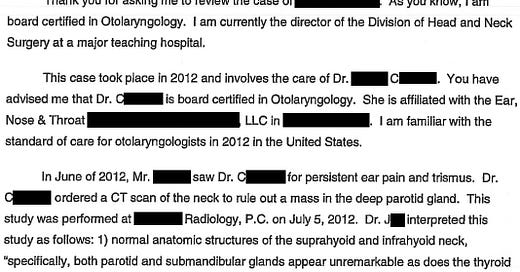



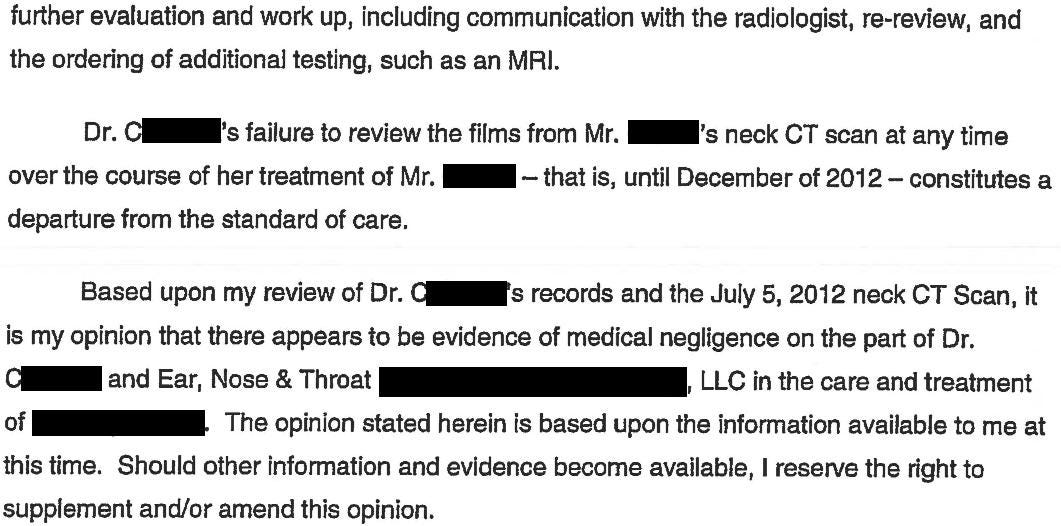

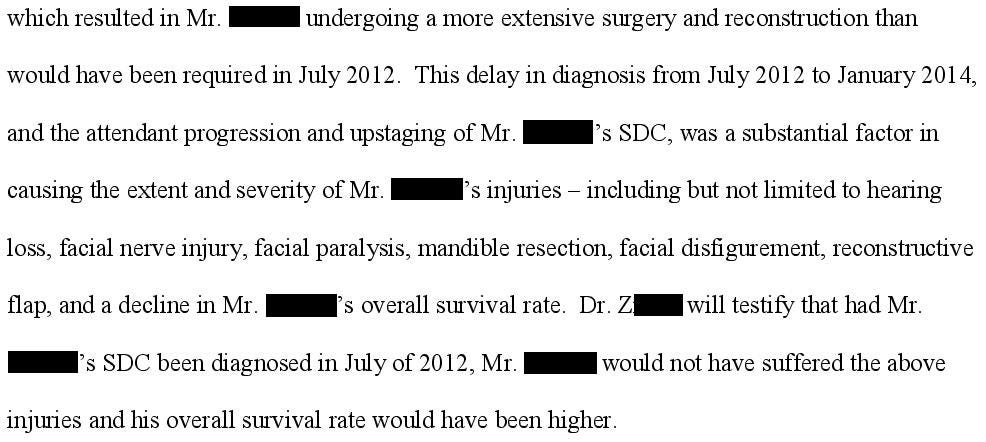

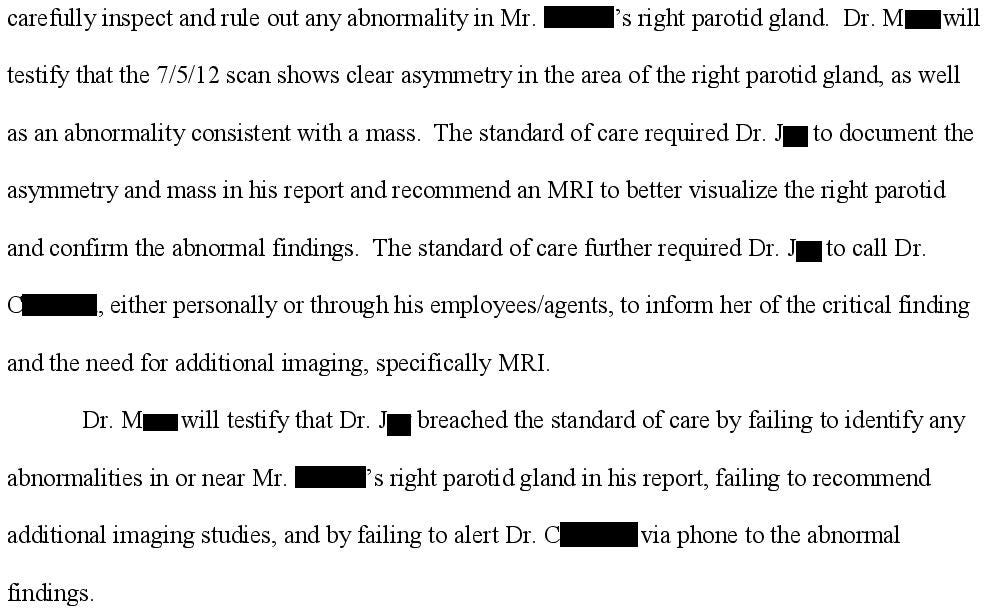
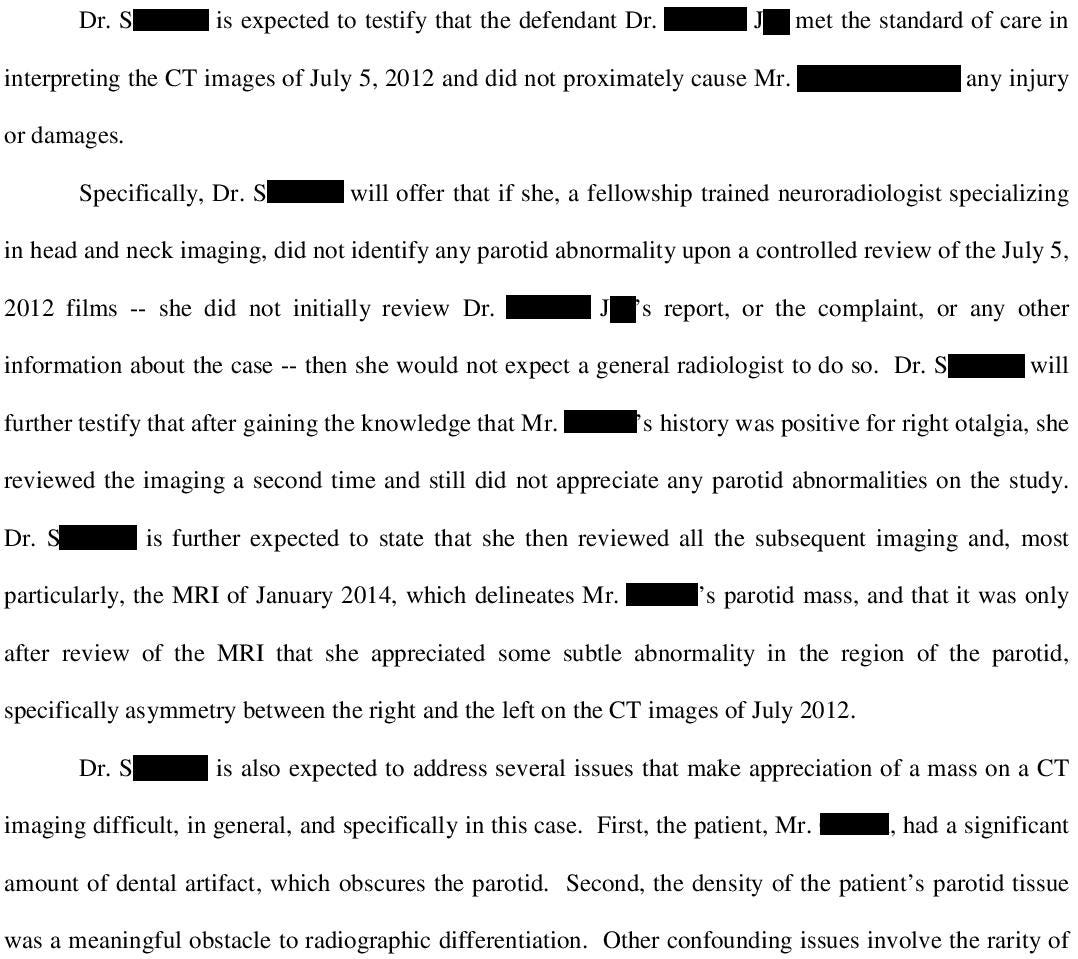
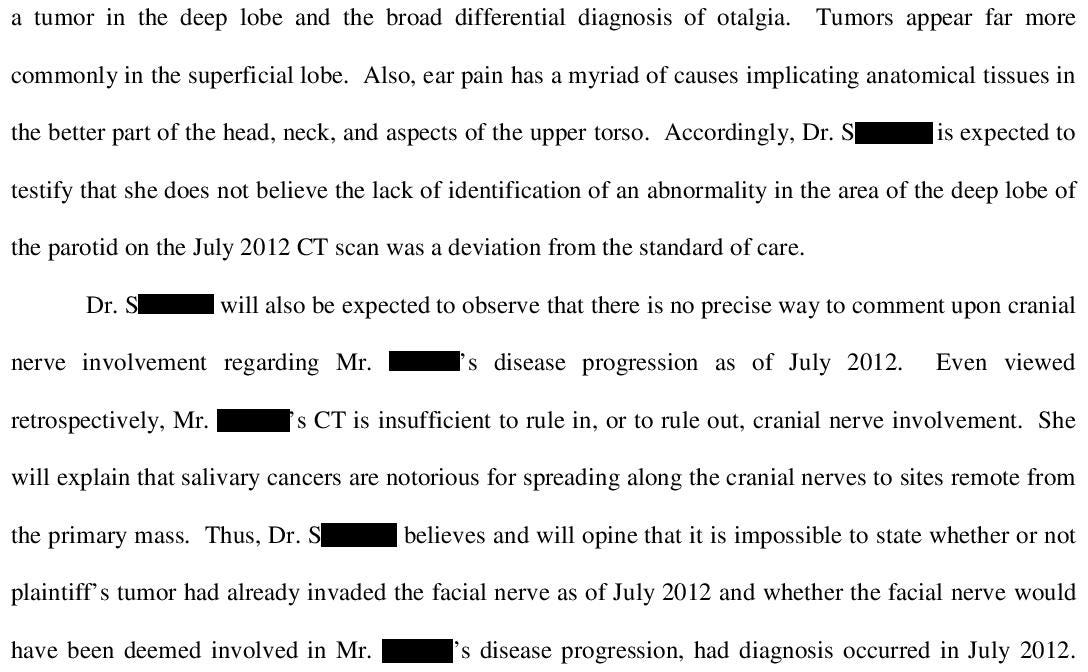
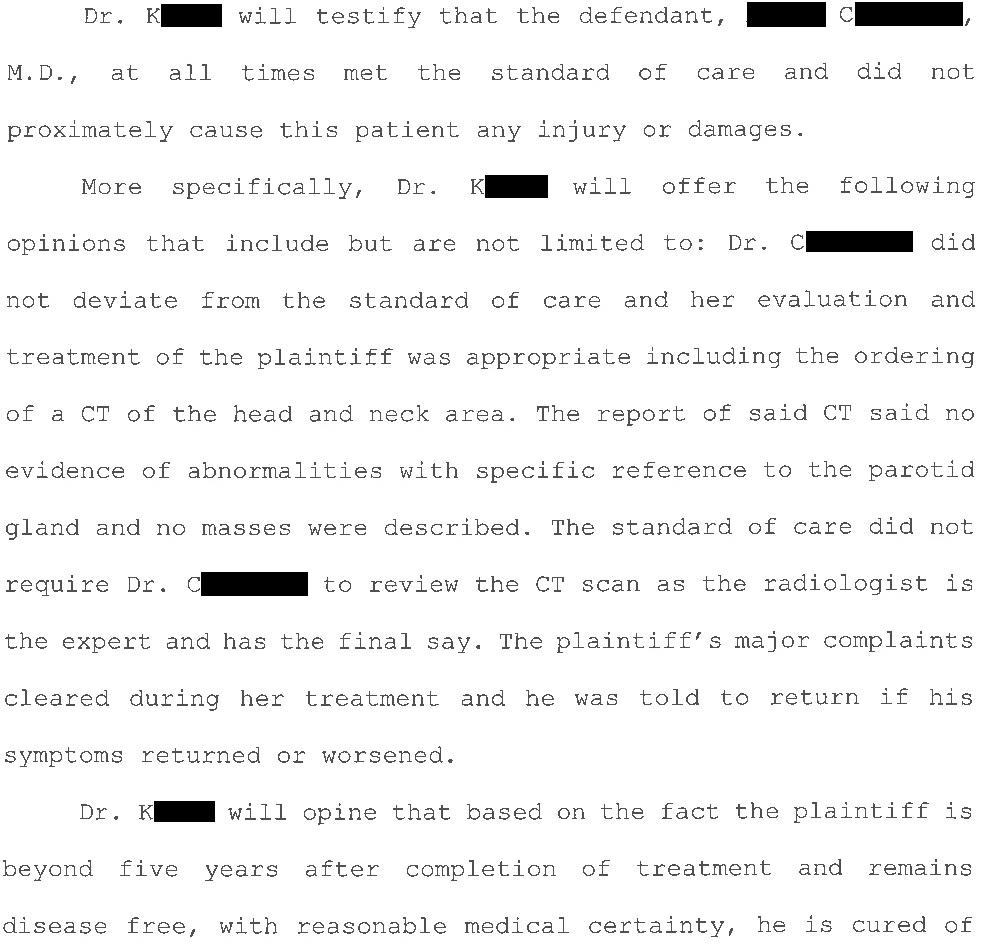
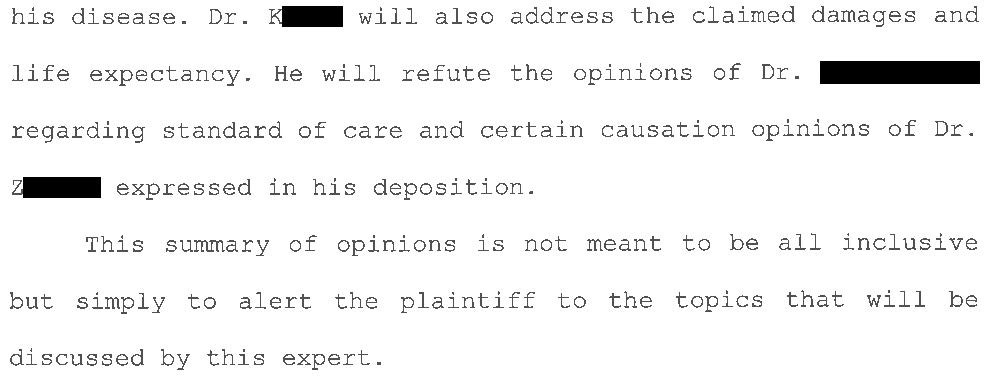
![Carotid Blowout Syndrome [Oncology]](https://substackcdn.com/image/fetch/$s_!cbOG!,w_1300,h_650,c_fill,f_auto,q_auto:good,fl_progressive:steep,g_auto/https%3A%2F%2Fbucketeer-e05bbc84-baa3-437e-9518-adb32be77984.s3.amazonaws.com%2Fpublic%2Fimages%2F86be351e-d2d6-4425-a9a6-bb398aa087ed_3014x1501.jpeg)
![Locked-In Syndrome [Chiropractor Adjusts Neck]](https://substackcdn.com/image/fetch/$s_!1WI-!,w_1300,h_650,c_fill,f_auto,q_auto:good,fl_progressive:steep,g_auto/https%3A%2F%2Fbucketeer-e05bbc84-baa3-437e-9518-adb32be77984.s3.amazonaws.com%2Fpublic%2Fimages%2F7874cfbf-32fc-481e-a0c4-4761adb154ae_675x532.jpeg)
Seems crazy that the ENT should be on the hook for this. If she can’t trust the radiology report and needs to interpret the images herself, what’s the point of the radiologists existence? The ENT should get to bill the insurance for interpreting the study herself if that were the case
Yeah, I myself in the beginning of my practice believe and relies on radiology reporting until I myself found that radiologist made mistakes too, they missed a C2 fracture and reported as normal, another time they missed a renal mass but we found it because we review them , since then we tends to review the ct , at least a glance